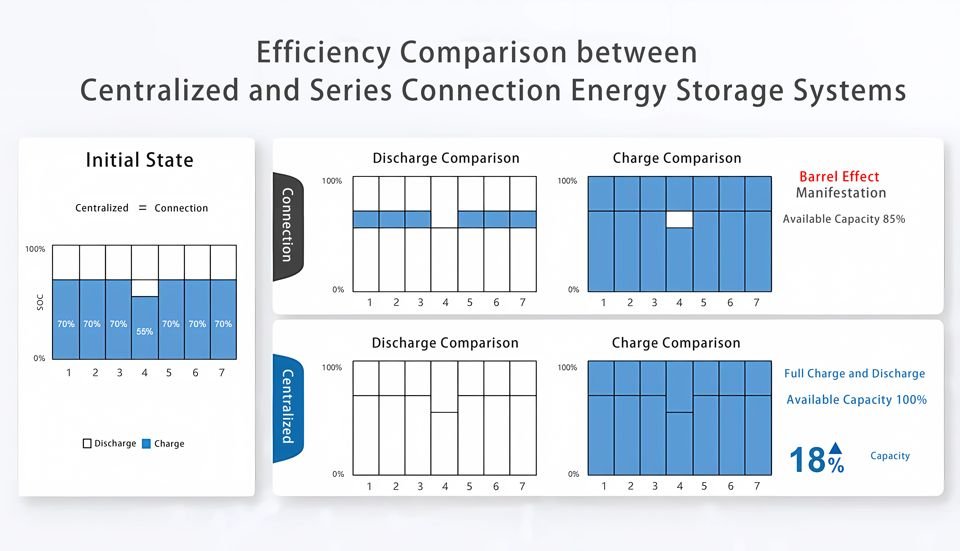Choosing the right battery energy storage solution is essential for optimizing performance and meeting energy demands. In this article, we will explore the key differences between string-based and centralized energy storage systems, highlighting their pros and cons to help you make an informed decision.

String-Based Energy Storage Systems
Advantages
- Improved Efficiency: String-based systems offer better battery balance and optimized charge/discharge performance, ensuring that energy is utilized effectively. 🔋💡
- High Reliability: In these systems, faults are isolated to specific clusters, minimizing the overall impact on the entire energy storage setup. 🛠️
- Increased Safety: With independent control mechanisms, string-based systems provide better thermal management, contributing to a longer battery life and reducing the risk of accidents. 🔥
- Flexibility: These systems are compact and scalable, making them easy to install and maintain in varied applications. 🌍
Disadvantages
- Complex Integration: Setting up string-based systems can be more complex, leading to challenges in debugging and initial configuration. 🔧
- Higher Costs: The need for additional equipment can increase the initial investment required for implementation. 💰
Centralized Energy Storage Systems
Advantages
- Simple Control: Centralized systems allow for direct series connections, making them easy to manage and control. 🎮
- Lower Costs: These systems tend to have a more affordable upfront cost and are easier to maintain, making them attractive for many users. 💵
Disadvantages
- “Weakest Link” Effect: The lifespan of centralized systems can be limited by the shortest-lived battery, leading to premature system failure. ⏳
- Cluster Leakage: Efficiency can take a hit due to voltage imbalances, causing energy losses in the system. ⚠️
- Safety Risks: There is a higher risk of overcharging and potential for system instability, which can compromise safety. 🔥
- Complex Maintenance: Repairs typically require more time, resulting in longer downtime for the system. ⏱️
Best Use Cases
String-Based Systems: These are particularly suited for scalable and flexible applications, such as industrial storage, renewable energy integration, and microgrids. Their ability to optimize efficiency and safety makes them an excellent choice for dynamic and varied energy needs. 🌱🔌
Centralized Systems: For projects that prioritize stability and simplicity, centralized systems can be ideal. They work well in low-cost setups where straightforward control is crucial, making them beneficial for commercial buildings and basic energy management needs. 🏢💼
Conclusion
In conclusion, the decision between string-based and centralized energy storage systems boils down to your specific project requirements. Whether you need flexibility, efficiency, or cost-effectiveness, understanding the pros and cons of each system will guide you in making the most appropriate choice for your energy storage needs. Evaluate your priorities and select a system that aligns with your energy goals!
